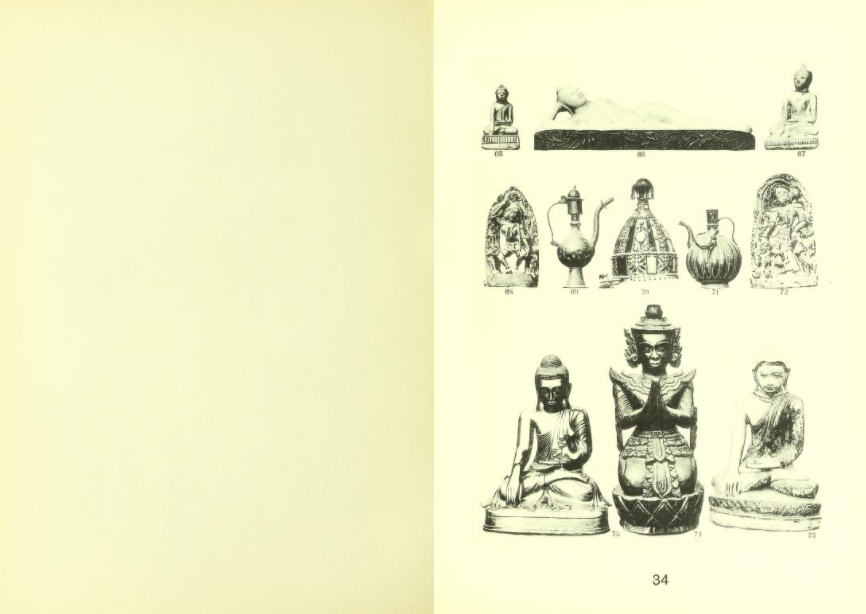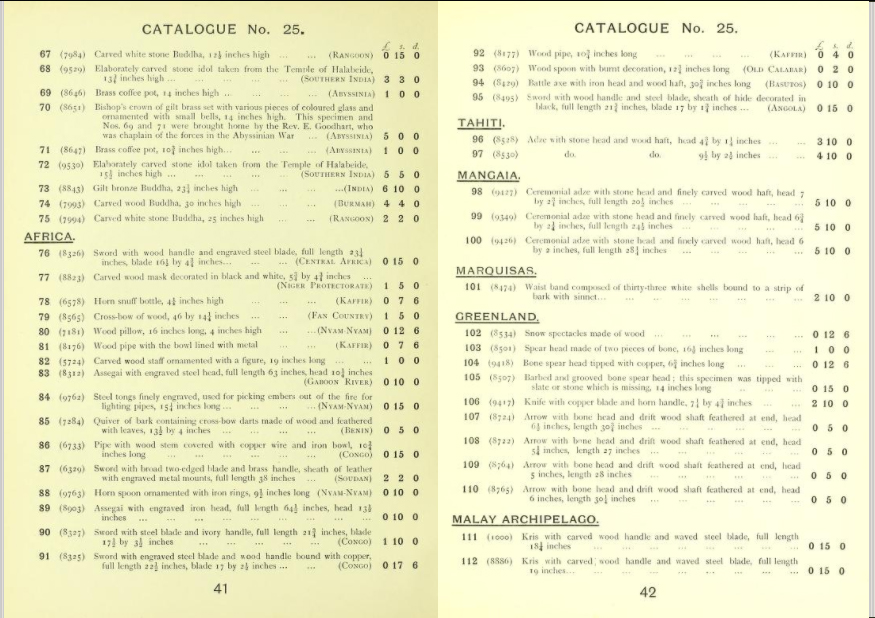What: Abuna’s slippers, made of silver, gold and leather, taken by the British Museum’s expert on the expedition, Richard Rivington Holmes
Where: The British Museum, Great Russell St, Bloomsbury, London WC1B 3DG
Provenance: Maqdala referenced at length in the museum’s acquisition notes.
The catalogue entry reads:
“Pair of slippers with leather soles, stitched to silver inner sole and gilded silver uppers. The three layers of the slippers are stitched together with blue silk thread, a decorative upper stitch of metal [copper?] bound thread forms a chain stitch through which the silk thread passes.
“The silver uppers are made in two parts, front and back, soldered together. The backs of the slippers are decorated with fine filigree work of round armed crosses and raised ovoid bosses.
The fronts are decorated with bands of gilded filigree crosses, wirework and two elaborate filigree crosses. The front of the slippers arch upwards to a point and the toes curl sharply upwards.
Curator’s comments:
“This type of slipper was only worn by royalty and the highest ranking members of the church such as the Etchege or Bishop. An illustration of these slippers in the Illustrated News of 1868 states that they once belonged to Bishop Selama who was head of the Ethiopian Orthodox Church from 1841 – 1867. In 1864 he was incarcerated at Maqdala by Emperor Tewodros II where he died three years later in 1867.”
Condition: “Good, some wear to the leather soles each of which has two small holes.”
Acquisition notes: Richard Rivington Holmes, an assistant in the manuscripts department of The British Museum, had accompanied the expedition as an archaeologist. He acquired a number of objects for the British Museum, including around 300 manuscripts which are now housed in the British Library. In 1868 the Secretary of State for India, Sir Stafford Henry Northcote, 1st Earl of Iddesleigh, donated to The British Museum two further collections f material from Maqdala.
Detail
Museum number: Af1868,1001.6.a-b
Date: 19thC (mid)
Previous owner/ex-collection: Sir Richard Rivington Holmes
Acquisition date: 1868


